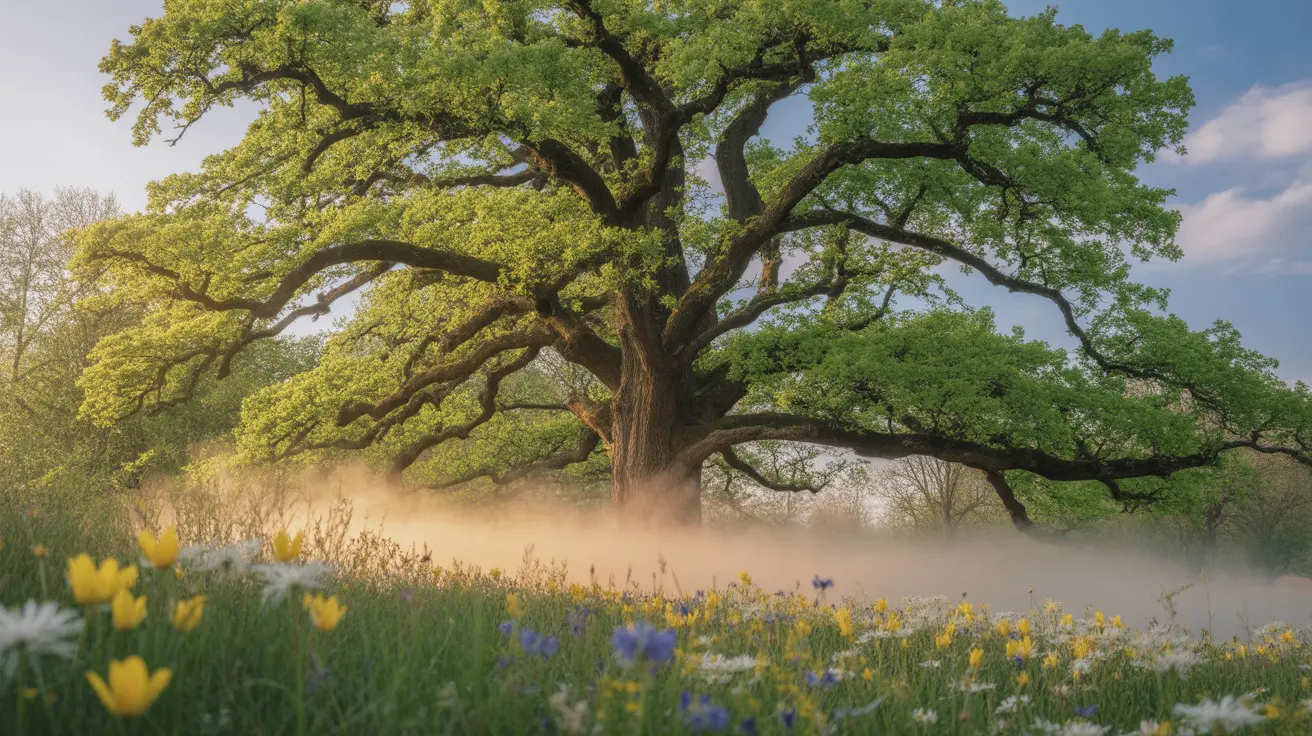For millions of Americans, spring's arrival brings not just warmer weather but also the unwelcome symptoms of tree pollen allergies. Understanding which trees are the most allergenic can help you better manage your symptoms and plan your outdoor activities more effectively.
In this comprehensive guide, we'll explore the trees that cause the most severe allergic reactions, discuss management strategies, and provide practical advice for reducing your exposure to troublesome tree pollen.
Most Allergenic Trees to Watch Out For
Several tree species are notorious for causing significant allergic reactions due to their high pollen production and dispersal patterns:
Oak Trees
Oak trees are major allergy triggers, producing large quantities of lightweight pollen that can travel for miles. These trees typically release pollen in spring and early summer, causing prolonged allergy seasons in many regions.
Maple Trees
Both silver and red maple varieties release substantial amounts of pollen in early spring, often before many other trees begin their pollination cycle. Their early-season pollen can catch allergy sufferers off guard.
Birch Trees
Birch trees are particularly problematic in northern regions, producing highly allergenic pollen that peaks in April and May. Their pollen is known to cause severe reactions in sensitive individuals.
Identifying and Managing Tree Pollen Allergies
Understanding the timing and symptoms of tree pollen allergies is crucial for effective management:
Common Symptoms
- Itchy, watery eyes
- Runny nose and sneezing
- Scratchy throat
- Congestion
- Coughing
Peak Pollen Times
Tree pollen levels are typically highest during these conditions:
- Early morning hours
- Warm, dry, windy days
- Spring months (February to May, depending on location)
- After rain when trees release new pollen
Prevention and Mitigation Strategies
While you can't completely avoid tree pollen, several strategies can help reduce exposure:
Outdoor Activity Planning
Monitor local pollen forecasts and plan outdoor activities accordingly. Consider staying indoors during peak pollen hours, especially on warm, windy days.
Home Protection
Keep windows closed during high pollen periods and use HEPA air filters. Remove shoes before entering your home and change clothes after being outdoors for extended periods.
Frequently Asked Questions
What are the worst trees for allergies, and how can they be avoided?
The worst trees for allergies include oak, maple, birch, elm, and cedar. While complete avoidance isn't always possible, monitoring pollen forecasts and limiting outdoor exposure during peak pollination periods can help reduce symptoms.
How can I manage tree pollen allergies during high pollen seasons?
Effective management strategies include taking prescribed or over-the-counter antihistamines before symptoms start, using air purifiers indoors, keeping windows closed, and showering after outdoor exposure to remove pollen from hair and skin.
What are some effective treatments for tree pollen allergies available over-the-counter?
Common OTC treatments include antihistamines like cetirizine and loratadine, nasal corticosteroids, decongestants, and eye drops. Some people find relief with saline nasal sprays and rinses.
Can I plant trees that are hypoallergenic to reduce pollen exposure in my yard?
Yes, you can choose female trees (which don't produce pollen) or species known to be less allergenic, such as dogwood, pear, plum, or redbud trees. Consult with a local arborist for recommendations suited to your area.
How can I differentiate between tree pollen allergies and other types of seasonal allergies?
Tree pollen allergies typically occur in early spring (February to May), while grass pollen allergies peak in late spring and summer, and weed allergies in late summer and fall. Keeping a symptom diary and noting when your allergies are worst can help identify the specific trigger.




